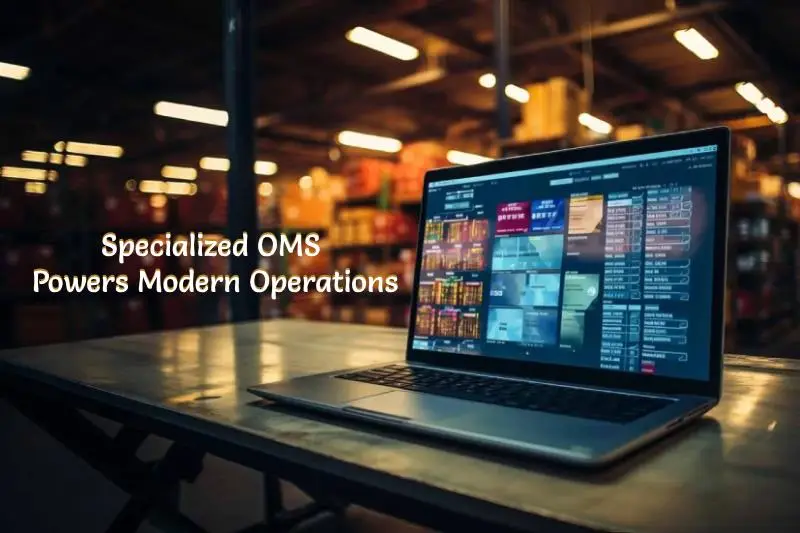Modern commerce demands more than traditional centralized systems can handle, and ERP systems have been the trusted backbone for integrating core business functions. However, as sales channels multiply and customer expectations shift towards faster, more flexible fulfillment options, ERP order management faces natural constraints. Order Management Systems have emerged as a specialized, adaptable system that complements ERP by focusing exclusively on the end-to-end order lifecycle, managing complex fulfillment workflows, and multi-channel synchronization.
OMS platforms offer agility through modular architecture, cloud-native scalability, and API-driven connectivity, enabling businesses to respond swiftly to market changes and customer demands. Together, ERP and OMS form a powerful duo, combining ERP’s enterprise-grade backbone with OMS’s nimble, customer-focused orchestration, enabling faster delivery, smarter inventory use, and a fast-paced commerce environment.
The limitations of centralized ERP in order management
ERP systems, which traditionally centralized core business processes, have limitations due to their tightly coupled modules, batch-oriented workflows, rigid order management, and inability to handle omnichannel commerce. These constraints make it difficult for businesses to scale efficiently or deliver real-time customer experiences, necessitating the development of specialized systems for agile order management to address these challenges.
How OMS architecture drives agile order fulfillment
Order Management Systems are made to precisely manage intricate order lifecycles. Their usage of containerized infrastructures and cloud-native microservices enables smooth system integration. OMS minimizes data transmission delays by utilizing event-driven systems for near-real-time state synchronization. A flexible fulfillment engine that optimizes fulfillment paths according to factors including carrier capacity, shipping costs, and inventory allocation is one of its key features. Because of its modular design, which encourages resilience and flexibility, OMS is perfect for handling omnichannel fulfillment processes.
Integration patterns between ERP and OMS
The seamless integration of ERP and OMS systems is crucial for maintaining data integrity, operational efficiency, and business continuity. The integration pattern involves event-driven synchronization, where state changes are propagated asynchronously via message brokers or event buses, reducing processing latency and avoiding tight coupling. API-led connectivity enables synchronous, request-response interactions for operations requiring immediate validation or data retrieval. Middleware layers, such as Enterprise Service Buses or iPaaS tools, serve as the integration backbone, managing protocol translation, message transformation, routing logic, and error handling.
Data reconciliation processes identify discrepancies between OMS and ERP datasets, preventing data duplication or race conditions. This results in an enterprise-grade, scalable, and resilient system capable of supporting complex omnichannel commerce at scale.
Key benefits of the ERP-OMS paradigm shift
The shift from a monolithic, ERP-centric order management approach to a decoupled, hybrid ERP-OMS architecture offers strategic and operational advantages. This shift enables businesses to build scalable and flexible systems without compromising the reliability of core transactional platforms.
Benefits include operational agility, faster time-to-market, real-time visibility, cost optimization through intelligent fulfillment, a future-ready and technologically decoupled stack, enhanced resilience and flexibility, and a logical separation of duties. The externalized, modular OMS layer provides a sandboxed environment for designing, testing, and deploying new fulfillment workflows without risking ERP stability.
OMS platforms can auto scale to accommodate high order volumes without bottlenecks, ensuring business continuity. The hybrid model also introduces system redundancy and logical separation of duties, enhancing fault tolerance and facilitating faster incident recovery.
In summary, the integration of a purpose-built Order Management System (OMS) with traditional ERP systems is crucial for modern omnichannel fulfillment. The OMS complements ERP, providing real-time order orchestration, inventory visibility, and intelligent fulfillment routing. This architecture supports business scalability, operational resilience, and continuous innovation. The hybrid ERP-OMS model enables businesses to deliver consistent, flexible, and personalized customer experiences across all sales channels. This shift is not just a technical upgrade, but a foundational shift for future-ready commerce operations.
Need help choosing or integrating an OMS that works with your ERP stack? Reach out to us at marketing@tychons.com to explore modular solutions for your business.

